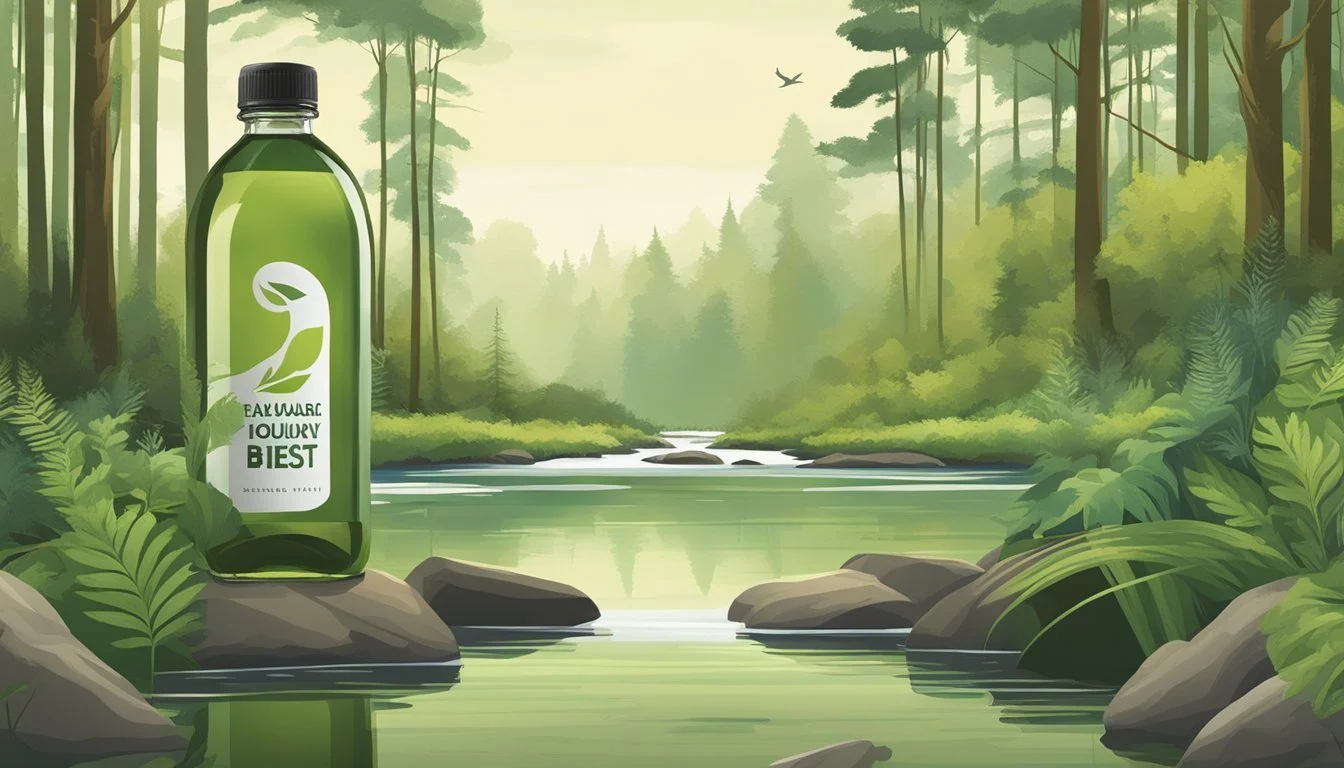Deer Park vs. Action
Which Bottled Water is Better? A Clear Comparison
Deer Park and Action are two well-known bottled water brands that have garnered attention among consumers looking for quality hydration options. Deer Park, a brand under Nestlé, is famous for its 100% natural spring water sourced from various springs along the Eastern Seaboard of the United States. Action, on the other hand, positions itself with a unique purification process and a commitment to sustainability.
When comparing the two, taste and sourcing are the key differentiators. Deer Park offers a natural spring water experience, which some consumers find appealing for its crisp and clean taste. Action’s purification process ensures a consistently smooth taste that appeals to those looking for a neutral, refreshing drink. Ultimately, the choice between Deer Park and Action comes down to personal preference in taste and values regarding water sourcing and purification practices.
For those who prioritize natural sourcing, Deer Park might be the preferred option. Meanwhile, if sustainability and purity are more significant factors, Action could be the superior choice. By understanding these factors, readers can make an informed decision on which bottled water brand aligns best with their needs and preferences.
Historical Development of Bottled Water
Bottled water has a rich history dating back centuries. Initially, water from mineral springs was bottled for therapeutic purposes as early as the 1600s. This trend gained more traction in Europe and parts of America, where drinking mineral water was believed to provide health benefits.
By the mid-19th century, the commercial appeal of bottled water expanded. Brands like Deer Park emerged in this period, capitalizing on the demand for pure spring water. Deer Park, originating in Maryland, started its journey shortly after the American Civil War, showcasing the long-standing preference for natural spring sources.
Plastic bottles revolutionized the industry in the late 20th century. Before this, glass bottles were predominantly used. The introduction of plastic offered practicality and convenience, significantly boosting the consumption of bottled water. It allowed for easier transport and reduced production costs.
Technology and Marketing: Advances in water purification technology and strategic marketing campaigns further fueled the industry's growth. Brands emphasized purity and health benefits, appealing to a health-conscious consumer base.
Modern Industry: Today, the bottled water industry is a multi-billion dollar global market. Major players like Nestlé, which owns brands including Perrier, Poland Spring, and Deer Park, dominate the scene.
The industry's development reflects changes in consumer preferences, technological advancements, and shifts in packaging materials from glass to plastic. Each era contributed to the profound transformation and growth of bottled water as a staple commodity.
Understanding Bottled Water
Bottled water comes in different types, each with its unique characteristics and labels. Knowing what these terms mean can help consumers make more informed choices.
Types of Bottled Water
Spring Water
Spring water is sourced from natural springs, often boasting a fresh taste. Deer Park, for example, draws its water from various springs along the Eastern Seaboard of the United States, ensuring it remains 100% natural spring water.
Purified Water
Purified water undergoes processes like reverse osmosis or distillation to remove impurities. Brands like Aquafina are known for their rigorous purification, which results in a consistently smooth and clean taste.
Alkaline Water
Alkaline water has a higher pH level, generally above 7. This type of water is re-mineralized to add electrolytes, which can be beneficial for hydration and taste. Smartwater, for instance, adjusts its pH to be more neutral and includes added electrolytes.
Labels and Terminology
Mineral Content
The mineral content in bottled water can vary significantly. Minerals like calcium, magnesium, and potassium are often found naturally in spring water or added in purified water.
Electrolytes
Electrolytes are essential for hydration and muscle function. Brands often add electrolytes to their water to enhance taste and provide additional health benefits.
pH Level
The pH level indicates the acidity or alkalinity of water. A neutral pH is around 7. Deer Park typically has a pH range from 6.3 to 8.7, aligning closely with pure water, while Smartwater aims for a pH between 6.5 to 7.5.
Understanding these terms can help in selecting the right type of bottled water for individual preferences and needs.
Source and Origin Analysis
Deer Park and Action bottled waters each have distinctive origins and methods of sourcing that contribute to their unique properties and flavors. Examining these factors provides insight into their quality and appeal to consumers.
Assessing Water Sources
Deer Park sources its water from multiple springs located across the eastern United States, particularly around Maryland. This water is primarily derived from groundwater that percolates through layers of volcanic rock and other natural materials, providing a pure and refreshing taste.
Action bottled water, on the other hand, originates from a pristine mountain valley known for its natural filtration processes. This means the water often flows through underground channels in the French Alps before being collected. The geological features of the Alps add a unique minerality to the water, enhancing its flavor profile.
Both brands emphasize natural sourcing, but their distinct geological origins highlight unique aspects of their purity and taste profile.
Brands in Focus: Deer Park and Action
Deer Park and Action are prominent players in the bottled water market, each with unique attributes and histories that make them stand out. Examining their origins and product offerings reveals their strengths and distinct features.
Brand Histories
Deer Park:
Deer Park, a subsidiary of Nestlé, prides itself on being sourced from multiple springs along the Eastern Seaboard of the United States. Established over a century ago, it markets itself as 100% natural spring water, emphasizing purity and a crisp taste.
Action:
Action is an emerging brand in the bottled water industry, known for its robust filtration and purification processes. While relatively new compared to Deer Park, Action has gained popularity due to its focus on sustainability and clear, refreshing taste. Unlike Deer Park, Action sources its water through a proprietary purification system.
Product Range and Differentiators
Deer Park:
Deer Park offers a variety of sizes ranging from small single-serve bottles to large multi-gallon options. It differentiates itself through its commitment to natural spring water, ensuring no additives or artificial preservatives.
Action:
Action boasts a diverse product lineup that includes fortified options, such as electrolyte-infused water. It positions itself as a modern, eco-friendly choice, often utilizing recyclable packaging. The brand appeals to health-conscious consumers looking for enhanced hydration options.
These elements illustrate how Deer Park and Action cater to different consumer needs while both maintaining a strong presence in the bottled water market.
Quality Assessment
When evaluating the quality of bottled water, factors such as minerals, flavor profile, and health implications are critical. This section explores Deer Park and Action bottled waters in terms of their mineral content and safety profiles.
Minerals and Flavor Profile
Deer Park sources its water from springs across the eastern United States. This spring water contains naturally occurring minerals, contributing to its crisp taste. Minerals like calcium, magnesium, and potassium can be found in Deer Park, enhancing its flavor profile without any artificial additives.
Action water, on the other hand, is purified through several filtration steps, removing most minerals. This results in a clean taste but can make the water feel flatter compared to natural spring water. Both brands adhere to FDA standards for bottled water, ensuring contaminants like heavy metals are within safe limits.
Health Implications
In terms of health implications, Deer Park’s naturally sourced minerals can be beneficial. For instance, calcium and magnesium are vital for bone health and muscle function. However, the spring water must consistently meet EPA and FDA safety standards to ensure no contamination from environmental pollutants. Deer Park’s rigorous testing minimizes the risk of harmful substances such as arsenic or heavy metals.
Action water, due to its extensive purification process, typically contains fewer minerals but consistently maintains a low risk of contamination. The absence of minerals might be a consideration for those looking for a more nutrient-rich option, yet its purification can appeal to individuals prioritizing safety against pollutants.
In terms of safety, both Deer Park and Action are committed to high standards, but they achieve this through different methods. Deer Park’s natural spring sources provide inherent benefits, while Action’s purification process ensures a clean and safe product.
Taste and Hydration Factors
When comparing Deer Park and Action bottled water, the key areas to consider are taste and how effectively each water keeps you hydrated.
Taste Comparison
Deer Park boasts a neutral to slightly acidic pH level which typically ranges from 6.3 to 8.7. This range is close to that of pure water, leading to a clean and refreshing taste profile. Moreover, being spring water, Deer Park has a natural flavor that many consumers find appealing.
Action, on the other hand, often includes added electrolytes to enhance its taste and hydration properties. Electrolytes such as sodium, potassium, and magnesium contribute to a slightly more flavorful water, making it an interesting choice for those who prefer a bit more taste in their hydration.
Both brands offer unique taste experiences. For those who enjoy simplicity and the natural mineral taste of spring water, Deer Park is a strong contender. For those who prefer a slightly enhanced flavor due to added electrolytes, Action might be the better choice.
Hydration Efficiency
Hydration efficiency hinges on several factors including electrolyte content and pH balance. Deer Park's natural mineral composition provides essential minerals that aid in hydration and overall bodily functions. The balanced pH level ensures that the water is easily absorbed by the body.
Action takes a different approach by adding electrolytes to its water. Electrolytes are crucial for maintaining proper hydration levels, especially during physical activity. This makes Action a suitable option for athletes or anyone needing to replenish lost minerals quickly.
Both brands provide high-quality hydration, but the choice depends on the individual's needs. Deer Park remains close to pure, mineral-rich spring water, while Action leans towards an enhanced formula for active hydration.
Environmental Impacts and Sustainability
Understanding the environmental impact and sustainability of bottled water is crucial in evaluating which brand to choose. This section will explore the effects of the bottling process and plastic usage on the environment and the efforts made towards recycling.
Bottling Process and Carbon Footprint
The bottling process significantly affects a brand's carbon footprint. Deer Park sources its water from springs located in the eastern regions of the United States. Sourcing locally can reduce transportation emissions, thus minimizing the carbon footprint. Action, on the other hand, sources its water from various locations, potentially increasing transportation-related emissions if distribution is widespread.
The use of energy during the bottling process is another factor. Efficient production methods and renewable energy sources contribute to lowering the carbon footprint. Deer Park's commitment to leveraging eco-friendly bottling practices positions it as a more sustainable option in terms of production efficiency.
Plastic Usage and Recycling
Plastic bottles are a primary concern when examining the environmental impact of bottled water. Deer Park utilizes PET plastic, which is known for being BPA-free and recyclable. However, the effectiveness of recycling depends on consumer participation and the availability of recycling facilities. Action also uses PET plastic but has made additional strides by increasing the recycled content in their bottles.
Recycling rates play a crucial role in sustainability. While both companies encourage recycling, Deer Park has implemented campaigns to raise awareness about proper disposal and recycling practices. Action's initiatives include investments in improving recycling infrastructure and promoting the use of refillable bottles. The efforts by both brands aim to reduce the environmental burden of plastic waste, ensuring a more sustainable approach to bottled water consumption.
Market Availability and Accessibility
Deer Park and Action differ in market availability and accessibility across various regions. They have unique distribution channels, which can affect their presence in retail outlets.
Retail Presence and Distribution
Deer Park, sourced from springs in the eastern U.S., is widely available in this region. It’s commonly found in states like New York, Pennsylvania, and the surrounding areas. The brand is known for its distribution in major supermarket chains, convenience stores, and online retailers.
Action, on the other hand, has a strong presence in the Midwest and Texas. It's distributed through various retail channels, ensuring it reaches customers in both urban and rural areas. Stores like Walmart, Kroger, and regional grocery chains frequently carry Action, making it accessible to a wide audience.
Both brands utilize online platforms for distribution. Deer Park often features in e-commerce sites like Amazon, while Action leverages regional delivery services to ensure consistent availability.
Pricing and Value Comparison
Deer Park and Action offer distinct experiences in the bottled water market, each with its own pricing and value proposition. Examining both the cost and the quality they deliver is crucial for consumers looking for the best option.
Cost Analysis
When comparing Deer Park and Action bottled water, price points fluctuate depending on the region and retailer. Generally, a 24-pack of Deer Park 16.9 oz bottles retails between $4.99 and $6.99. Action water, known for premium packaging, tends to be higher, ranging from $6.99 to $8.99 for a similar quantity.
Deer Park often runs promotions and specials which can lower costs further, making it an attractive option for budget-conscious shoppers. Action, focusing more on premium appeal, rarely discounts its products, reflecting its upscale market position.
Comparing Price to Quality
Deer Park prides itself on sourcing from protected natural springs. Many consumers appreciate the crisp, clean taste attributed to its natural spring water. Its competitive pricing bolsters its value for those prioritizing purity and affordability.
Action water, often marketed as an elegant choice, includes meticulous filtration processes that ensure a smooth taste. The higher price correlates with premium packaging and brand positioning. Consumers willing to pay extra often look for a blend of quality and aesthetic appeal.
Pure Life, another player in the market, straddles a middle ground. Comparatively priced between $5.99 to $7.99 for 24 bottles, it offers a mixture of purified sources ensuring an accessible taste and quality balance.
Understanding the cost-quality balance is essential for making an informed choice. Both Deer Park and Action cater to different segments, from everyday hydration needs to refined preferences.
Final Thoughts and Recommendations
When comparing Deer Park and Action bottled water, it's important to focus on aspects such as quality, taste, sustainability, and health and safety. These factors will help determine which option better suits different consumer needs.
Consumer Recommendations
Quality: Deer Park emphasizes its natural spring water sourced from springs along the Eastern Seaboard, offering a more organic option. Action, if it's a purified water, may focus more on purification processes for consistent quality.
Taste: Taste preferences can be highly subjective. Deer Park’s natural spring water often has a crisp, clean taste, while Action might offer a different taste profile if it has added electrolytes or minerals.
Sustainability: It's important for consumers to consider the environmental impact. Look for any sustainability certifications or initiatives. Deer Park might promote its efforts in sustainable sourcing and packaging if that is part of their ethos.
Health and Safety: Both brands should adhere to strict health and safety standards. Consumers might want to verify the pH levels and any additional health claims made by either brand. Deer Park's natural springs boast a neutral to slightly acidic pH, contributing to its safety.
More About Deer Park
Deer Park vs Cascade Mountain: Which Bottled Water is Better?
Deer Park vs Hawaii Volcanic: Which Bottled Water is Better?
Deer Park vs Hawaiian Springs: Which Bottled Water is Better?
Deer Park vs Icelandic Glacial: Which Bottled Water is Better?
Deer Park vs Kirkland Signature: Which Bottled Water is Better?
Deer Park vs Mountain Valley Spring Water: Which Bottled Water is Better?
Deer Park vs Nestle Pure Life: Which Bottled Water is Better?
Deer Park vs Richard's Rainwater: Which Bottled Water is Better?
Deer Park vs Solan de Cabras: Which Bottled Water is Better?
Deer Park vs Talking Rain AQA: Which Bottled Water is Better?
Deer Park vs Whole Foods 365: Which Bottled Water is Better?
Deer Park vs Whole Foods Italian Still Mineral water: Which Bottled Water is Better?







